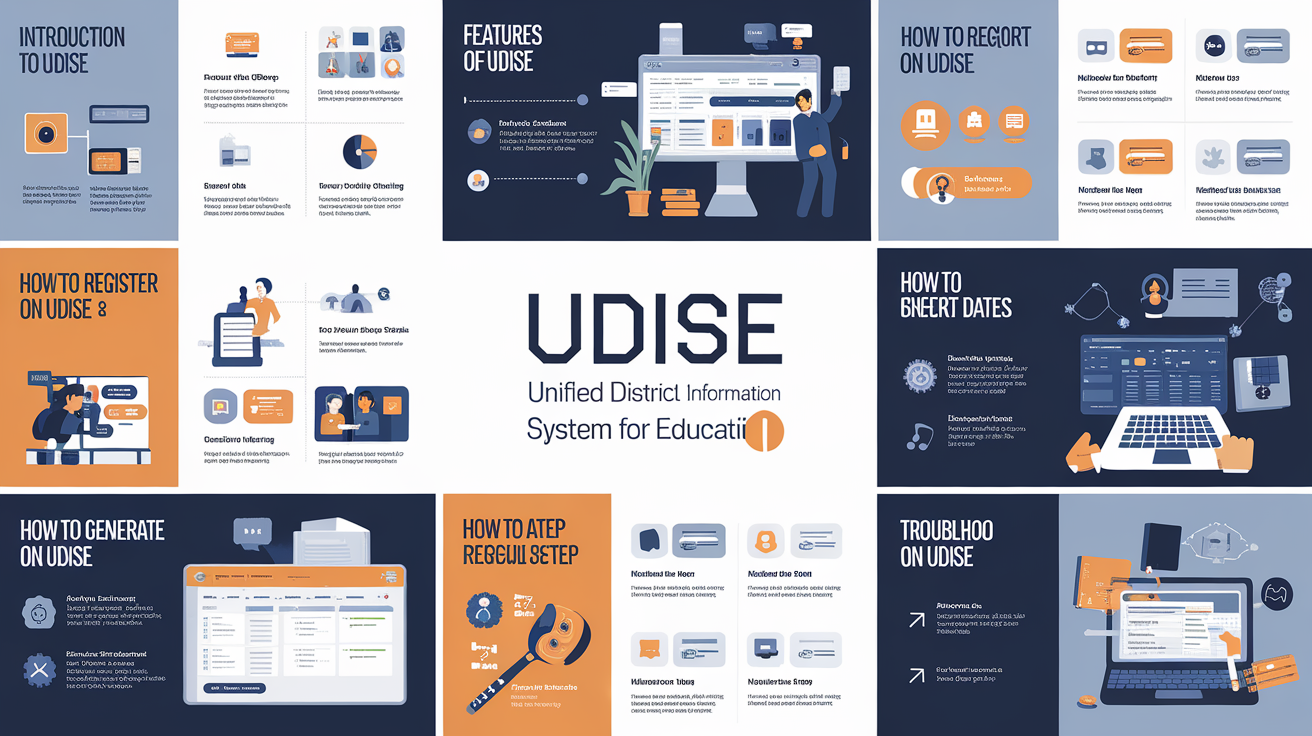The Unified District Information System for Education (UDISE) stands as a vital tool in India’s mission to strengthen school education. By creating a streamlined approach to data collection and analysis, UDISE has transformed how educational information is gathered across the country. In 2018, it was upgraded to UDISE+, enhancing data accuracy, frequency, and accessibility. This robust data management system has since facilitated effective policy-making, monitoring, and resource allocation for improved educational outcomes.
History of UDISE
The origins of UDISE trace back to two systems: the District Information System for Education (DISE) and the Secondary Education Management Information System (SEMIS). Initially, DISE focused on elementary education, while SEMIS managed secondary education data. By merging these systems, UDISE established a unified structure, efficiently streamlining the collection and reporting processes across all levels of school education. This integration helped fill significant gaps, aligning data requirements to meet both regional and national needs.
UDISED Objectives
The UDISE system was developed with a set of specific objectives to aid educational stakeholders. Firstly, it strives to ensure data uniformity across all educational districts in India. With a standardized system, data from various regions can be compared accurately. Additionally, it aims to support informed policy-making by offering reliable insights into various aspects of school education. These objectives work together to create a foundation that enables enhanced educational outcomes through data-driven strategies.
How UDISE Functions
UDISE operates through a series of systematic stages, ensuring data integrity at each level. Schools submit data annually, covering aspects like enrolment, infrastructure, and faculty information. This data is then verified by district officials before it’s compiled at the state level. The consolidated data ultimately reaches the national level, where insights are extracted to guide policy decisions. Through this structured approach, UDISE ensures that education data remains both accurate and comprehensive.
Types of Data Collected by UDISE
In its mission to deliver a holistic view of Indian school education, UDISE collects a range of critical data. This includes:
- Student Information: Data on enrollment, attendance, and performance.
- School Infrastructure: Details on facilities, classrooms, and resources available in each school.
- Teacher Data: Information on teacher qualifications, experience, and training.
By capturing these diverse data points, UDISE builds a complete picture of the educational landscape, from basic resources to academic outcomes.
Importance of UDISE
The impact of UDISE on educational planning and monitoring cannot be overstated. By providing reliable data, it allows policymakers to make targeted decisions. The data highlights trends in student enrollment, dropout rates, and gender parity in education. As a result, it supports initiatives aimed at improving education equity and resource allocation, particularly in underserved regions. Furthermore, UDISE enables ongoing monitoring, ensuring that changes in the educational landscape are promptly identified and addressed.
UDISED for Policymakers
For policymakers, UDISE serves as an essential source of information. The system’s detailed data helps assess resource requirements, identify gaps, and prioritize funding. It data is especially valuable in identifying areas with lower school enrolment rates, helping direct efforts to bring more children into the education system. By relying on it, policymakers can optimize resource allocation, ensuring a fair distribution that meets the needs of diverse regions.
UDISED+ System Overview
Launched as an improvement to the original system, UDISE+ introduced several advanced features. UDISE+ collects data annually and has introduced real-time monitoring for better accuracy. This modernized platform is accessible digitally, allowing for quick data input and updates. UDISE+ has further strengthened data quality by increasing the frequency of checks and integrating technology to reduce human error, which has significantly improved data reliability.
Data Collection in UDISE+
In UDISE+, data collection follows a refined process that leverages technology to streamline reporting. Digital tools are used by school staff to input data, reducing paperwork and enhancing accuracy. District officers validate this information, and verification checks are conducted at multiple levels. This process ensures that the data collected is as accurate as possible, which contributes to better decision-making.
Benefits of UDISE+
The enhanced UDISE+ platform provides several advantages:
- Improved Accuracy: With real-time data verification, UDISE+ reduces inaccuracies.
- Timely Updates: Faster data collection means that data remains relevant.
- Increased Accessibility: Digital access makes data available to stakeholders at all levels.
Overall, UDISE+ allows for more informed decisions that reflect current educational realities.
Challenges and Limitations
Despite its strengths, UDISE faces certain challenges. Data accuracy can be compromised due to insufficient training among school staff responsible for data entry. Rural schools, in particular, may encounter difficulties in using digital tools, which can hinder data collection. Moreover, limited internet connectivity in remote areas poses challenges, affecting the timeliness and accuracy of data submission. These challenges highlight the need for ongoing training and resource allocation to ensure the system’s effectiveness.
Role of Teachers in UDISE
Teachers play a crucial role in the UDISE system by submitting accurate and timely data. They record information on student attendance, grades, and demographics. Teachers’ insights contribute to a more accurate depiction of the school environment, making their participation vital for UDISE’s success. While this process can add to their workload, it ensures that it data accurately reflects school-level realities.
Role of Principals in UDISE
Principals are also instrumental in UDISE’s data collection. They oversee data submission and verify entries before forwarding them to district officials. Principals’ involvement in data accuracy directly impacts the quality of information available for policy-making. By ensuring compliance with reporting guidelines, they help it fulfill its objective of providing trustworthy educational data.
UDISE for Educational Insights
Through the data collected, UDISE generates valuable insights into school performance. Indicators such as enrolment rates, student-teacher ratios, and facility availability are analyzed to gauge the education system’s efficiency. These insights aid in identifying regions with resource shortages or low attendance rates, enabling targeted interventions. Thus, it empowers stakeholders to better understand and address educational needs.
UDISE for Government Agencies
UDISE data is extensively used by both state and national government agencies. It informs decisions about funding, staffing, and infrastructure development. For instance, the Ministry of Education uses its data to allocate resources to regions with high dropout rates or low enrolment. The system also supports compliance with educational policies by highlighting areas that require focused efforts.
UDISE’s Impact on Rural Schools
One of UDISE’s significant achievements lies in its focus on rural schools. Data collection in these areas highlights infrastructure challenges, teacher shortages, and other resource gaps. With these insights, government bodies can create policies that specifically target rural schools, promoting educational equity across geographic and socioeconomic boundaries.
UDISE and Technology Integration
The integration of digital technology has proven invaluable to UDISE’s data management capabilities. Schools and districts can now input and submit data electronically, streamlining the collection process. Technology has also enabled real-time data updates, which ensures that information remains current. These advances underscore the importance of digital tools in modern education data management.
Future Prospects for UDISE
Looking ahead, UDISE is poised to incorporate further technological advancements. Improvements in data validation, the integration of artificial intelligence, and more comprehensive analytics capabilities are expected to enhance UDISE’s accuracy and usability. Moreover, expanding training for school staff and improving rural connectivity are essential steps that can further strengthen its role in India’s educational landscape.
In conclusion, UDISE has become a cornerstone of India’s educational framework, supporting data-driven decisions that foster inclusive growth and equal opportunities. The introduction of UDISE+ has further strengthened this system, enhancing data accuracy and accessibility while addressing past limitations. As India’s educational landscape evolves, It continues to empower stakeholders with the insights needed to create impactful policies, ultimately shaping a more equitable and high-quality education system for all.








